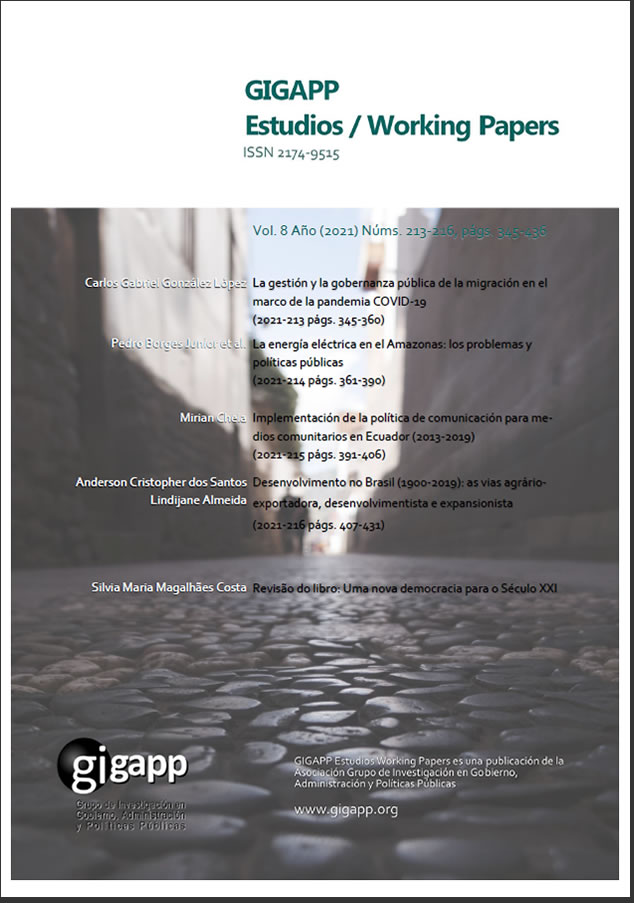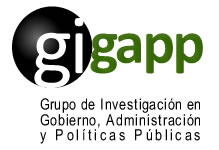Implementation of the communication policy for community media in Ecuador (2013-2019)
Abstract
This research analyzes the process of implementation of the communication policy for community media in Ecuador, during the period 2013-1029, and identifies the results obtained and the possible factors that explain these results. To do this, the study is based on an analysis model based on the proposals of Winter (2014) and Sabatier and Mazmanian (1981) and uses documentary review and interviews to collect data. The research concludes that the results of the implementation of the communication policy for community media were scarce, mainly due to political and technical factors inherent to the implementation phase but also to the formulation and design phases and the context of the politics.
Downloads
References
Berman, Paul. 1993. “El estudio de la macro y micro-implementación, en Luis Aguilar, ed., La imple-mentación de las políticas”. México: Miguel Ángel Porrúa.
Consejo de Regulación y Desarrollo de la Información y Comunicación [Cordicom]. 08 de junio de 2018. Oficio Nro. CORDICOM-PRC-2018-0168-OF. Informe técnico y estadístico sobre los in-formes trimestrales de la distribución equitativa de frecuencias.
Elmore, Richard. 1993. “Modelos organizacionales para el análisis de la implementación de progra-mas sociales”, en Luis Aguilar, ed., La implementación de las políticas. México: Miguel Ángel Porrúa.
Goggin, Malcolm; Bowman, Ann; Lester, James, y O’Toole, Jr. Laurence. 1990. Implementation The-ory and Practice: Toward a Third Generation. Nueva York: HarperCollins.
Graña, François. 2013. Medios comunitarios: el fin de una larga noche. Avatares de la Ley de Radio-difusión Comunitaria. Montevideo: Biblioteca Plural.
Kaplún, Gabriel. (coord. y ed.). 2015. ¿Qué radios para qué comunidades?: Las radios comunitarias uruguayas después de la legalización. Montevideo: Biblioteca Plural.
Lipsky, Michael, y Weatherley, Richard. 1977. “Street-level bureaucrats and institutional innovation: Implementing special-education reform. Harvard Educational Review”, 2: 171-197.
Marino, Santiago; Mastrini, Guillermo; Becerra, Martín; Rubini, Carolina, y Espada, Agustín. 2015. Diagnóstico sobre el acceso del sector sin fines de lucro a medios audiovisuales en la Argenti-na 2014. Licencias, autorizaciones, permisos y fondos concursables. Universidad Nacional de Quilmes.
Matland, Richard. 1995. “Synthesizing the Implementation Literature: The Ambiguity-Conflict Mo-del of Policy Implementation”. Journal of Public Administration Research & Theory, 2: 145-174.
Meny, Yves, y Thoenig, Jean-Claude. 1992. Las políticas públicas. Barcelona: Ariel.
Pressman, Jeffrey, y Wildavsky, Aaron. 1973. Implementation. Berkeley: University of California Press.
Sabatier, Paul. 1986. “Top-Down and Bottom-Up Approaches to Implementation Research: A Criti-cal Analysis”. Journal of Public Policy, 1: 21-48.
Sabatier, Paul, y Mazmanian, Daniel. 1993. “La implementación de la política pública: un marco de análisis”, en Luis Aguilar, ed., La implementación de las políticas. México: Miguel Ángel Por-rúa.
Segura, María Soledad, y Linares, Alejandro. 2017. “De la confrontación a la cooperación. La relación entre las emisoras comunitarias y el Estado en Argentina”. Redcom, 3: 47-62.
Van Meter, Donald, y Van Horn, Carl. 1993. “El proceso de implementación de las políticas. Un mar-co conceptual”, en Luis Aguilar, ed., La implementación de las políticas. México: Miguel Ángel Porrúa.
Winter, Soren. 2014. “Implementation”, en Guy Peters and Jon Pierre, eds., The SAGE Handbook of Public Administration. Londres: Sage.
Copyright (c) 2021 Mirian Chela (Autor/a)

This work is licensed under a Creative Commons Attribution-NonCommercial-ShareAlike 4.0 International License.
Those authors who have publications with this journal, accept the following terms:
a. Authors will retain their copyrights and guarantee the journal the right of first publication of their work, which will be simultaneously subject to the Creative Commons Attribution-NonCommercial-ShareAlike 4.0 International (CC BY-NC-SA Recognition License). 4.0) that allows third parties to share the work as long as its author and its first publication are indicated in this journal.
Under this open access license, readers (users) can:
- Share — copy and redistribute the material in any medium or format
- Adapt — remix, transform, and build upon the material
Under the following terms:
-
Attribution — Users must give appropriate credit, provide a link to the license, and indicate if changes were made. You may do so in any reasonable manner, but not in any way that suggests the licensor endorses you or your use.
-
NonCommercial — Users may not use the material for commercial purposes.
-
ShareAlike — If remix, transform, or build upon the material, users must distribute your contributions under the same license as the original.
- No additional restrictions — Users may not apply legal terms or technological measures that legally restrict others from doing anything the license permits.
b. Authors may adopt other non-exclusive license agreements for the distribution of the version of the published work (eg: deposit it in an institutional telematic archive or publish it in a monographic volume) provided that the initial publication in this journal is indicated.
c. Authors are allowed and recommended to disseminate their work through the Internet (e.g. in institutional telematic files or on their website) before and during the submission process, which can lead to interesting exchanges and increase citations of the published work. (See The effects of open access).



